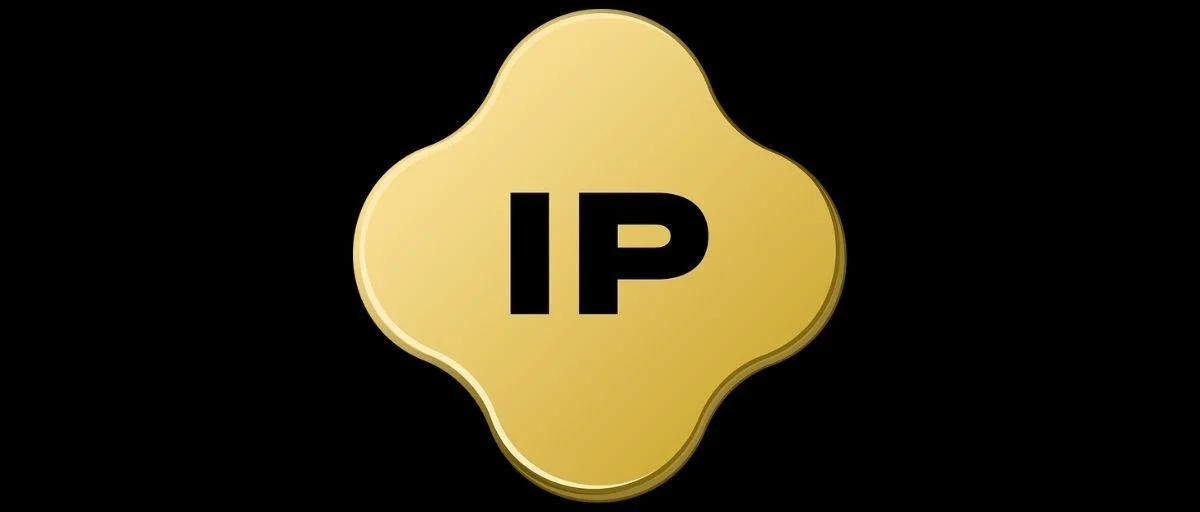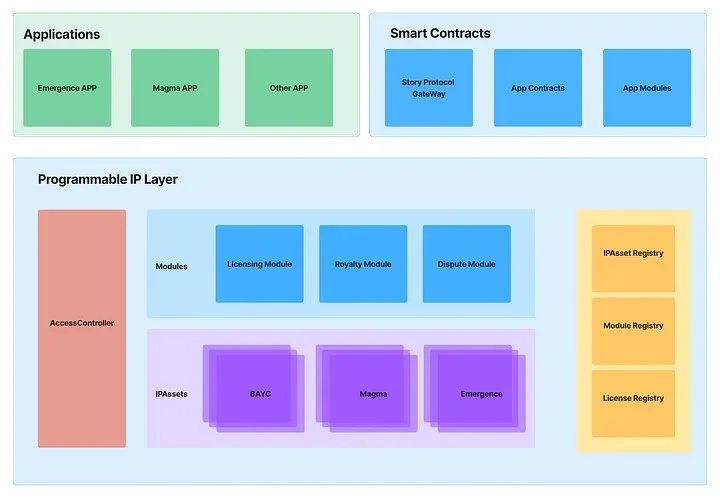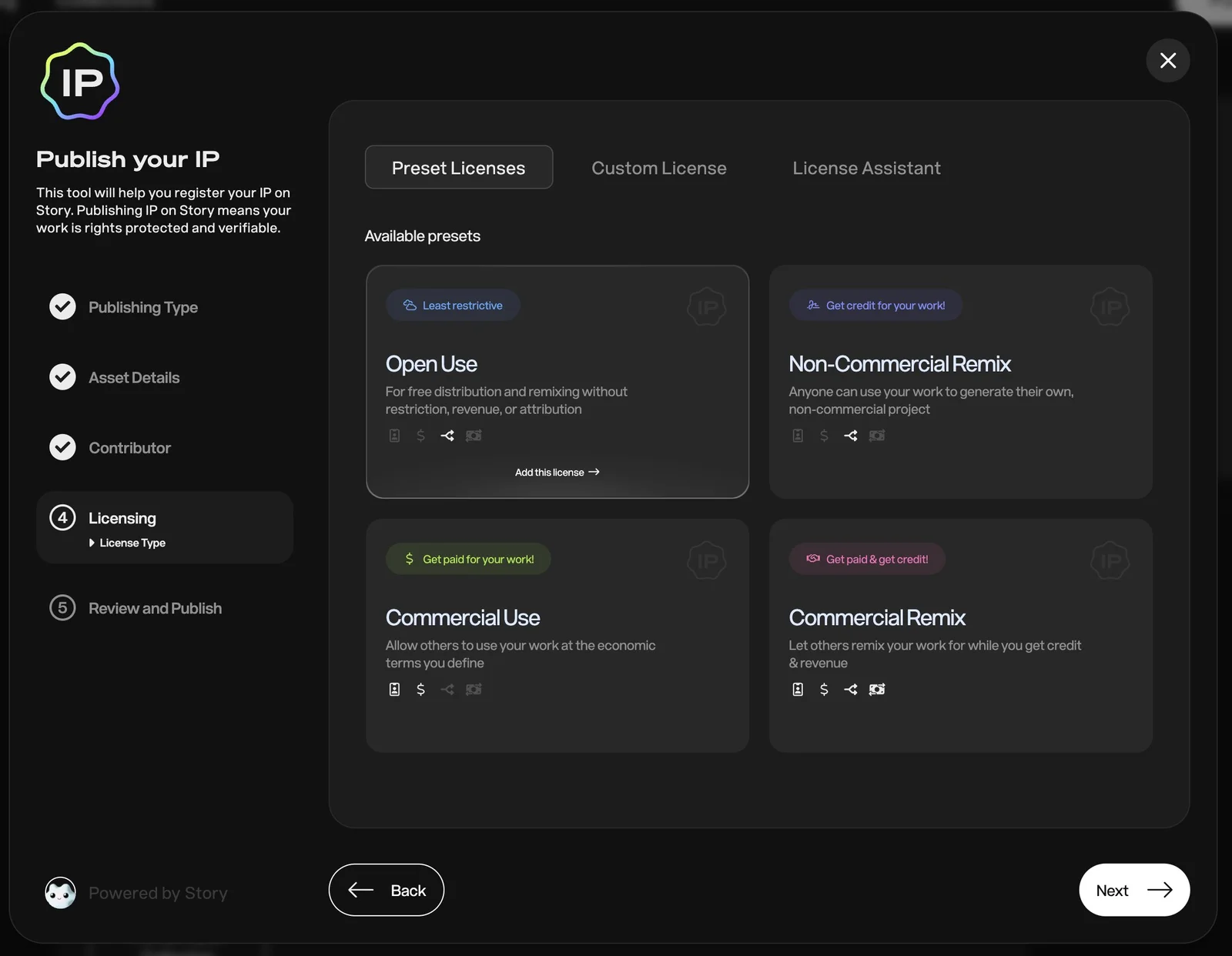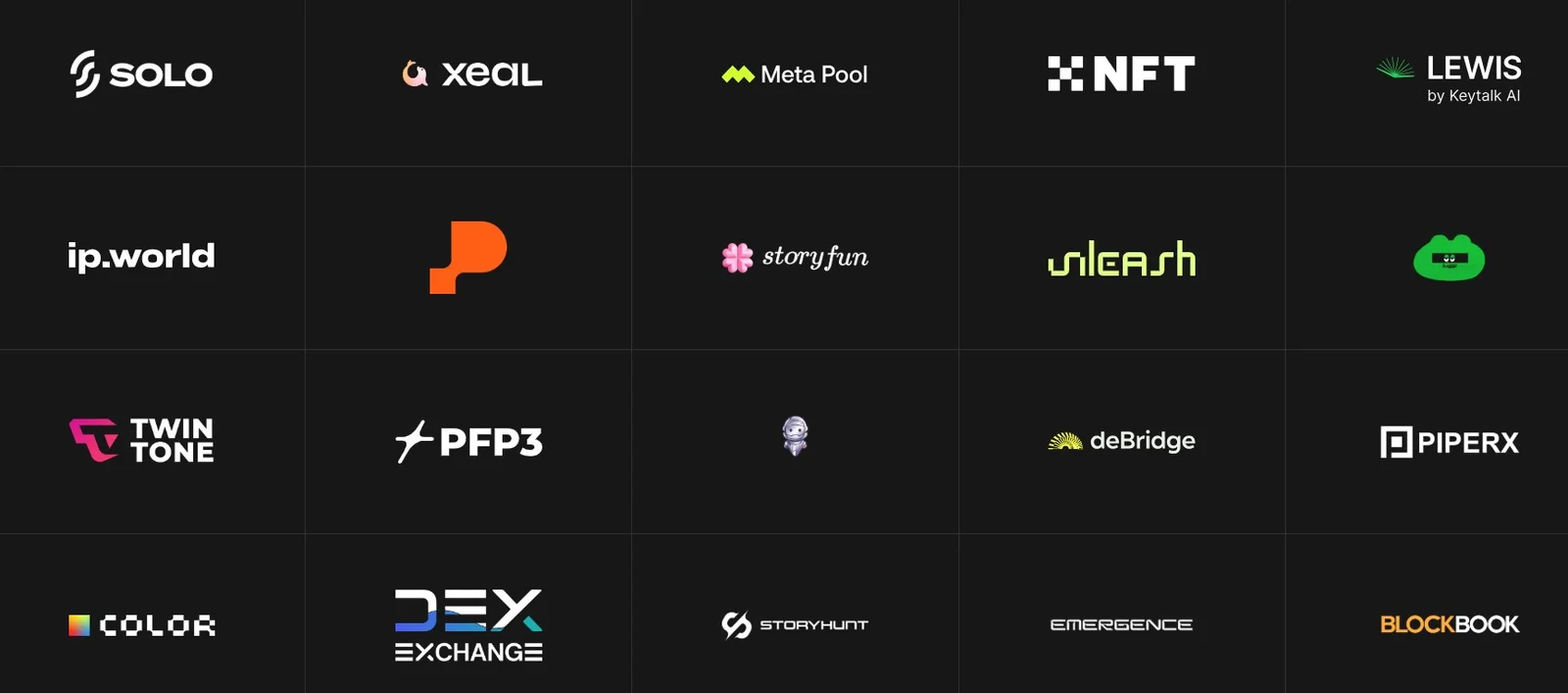With the evolution of the internet, storytelling is also transforming. We are no longer faced with a new form of narrative shaped solely by books, TV series, or games, but rather by digital communities, blockchain infrastructure, and decentralized technologies. This is precisely where Story (IP) emerges, offering creative content creators the opportunity to both protect their intellectual property and develop this content more freely in the Web3 world. Simply put: Story (IP) enables a story not only to be told but also to be owned, developed, and even monetized together with the community. So, what does this mean? How does story tokenization work? Why is it important? Moreover, how does a story live on-chain? In this guide, we will thoroughly explore what Story (IP) is, how it works, what blockchain infrastructure it uses, and why it offers an important model for creators.

Story (IP) is a Web3 protocol that enables digital content creators to manage their intellectual property rights on the blockchain. This protocol transforms creative works such as stories, characters, images, text, and music into NFTs (ERC-721) on-chain (tokenization), making author ownership and terms of use programmable. When users register their works through Story, they can set automatic licensing and copyright rules, allowing everyone to transparently see who owns what rights to the works. Ultimately, Story aims to adapt copyrights to today's Web3 world of content management and ownership by securing content intellectual property on the blockchain.
Definition and Origin of Story (IP)
Story Protocol (Story IP for short) is a Web3 project offering an open IP infrastructure. Its goal is to transform digital content into programmable IP assets on the blockchain. Story provides an IP repository to track the evolution of works by recording every stage of the creative process. Just as GitHub tracks software versions, Story tracks forks of stories, images, and sounds and transparently records the links between works. This allows copyrights to be transferred to the blockchain; Authors register their creations as intellectual property, predetermine their terms (commercial use, derivative work permissions, revenue sharing, etc.), and secure them through the code.
One of Story's most striking definitions is its positioning itself as the "GitHub of IP." So, what exactly does this mean? GitHub, well-known to software developers, is a platform for tracking the entire history, changes, and versions of a code. Code can be publicly accessible, others can contribute, and different versions of a code can be kept together. Story applies the same logic to creative content, namely intellectual property (IP) assets. A story, character, universe, or scenario—whatever the content—is represented as a token on Story, and just like code on GitHub, its versions can change. This allows transparent tracking of details such as how the content has evolved over time, who contributed what, and which community has more ownership of which version. In short, becoming the “GitHub of IP” enables the decentralized and community-driven management of creative works.

Announced in 2023, Story raised over $140 million in a round led by a16z Crypto. When the Story project was first announced, it promised a balance that sounded exciting in the creative world: protecting copyrights while fostering a “remix” culture. These two things often seem at odds. While copyrights focus on preventing unauthorized use of a work, remix culture is based on the idea of taking existing works, transforming them, adding to them, and creating new meanings. Story proposes a hybrid system that combines the two.
By tokenizing creative content on the blockchain, the protocol provides transparent and immutable documentation of each work’s original form—much like an NFT. This allows for the record of who first created a story or character to be fixed on-chain. On the other hand, it also leaves room for remixing, or reinterpretation, of this content. Remixers can reuse content within established rules and licenses, without completely excluding the rights holders of the original work. These processes are not only creative but also economic: revenue generated from remixed content can be returned to the original creators as a share, as defined in the system.

Thus, Story gives creators not only the right to say, "This is my work," but also the space to say, "This is my work, and I want it to evolve with the community."
The History of Story (IP): Key Milestones
Story, the product of a vision aimed at reimagining the future of content creation, has embarked on a remarkable journey since 2023. Although Story's foundations were laid in 2023, it took approximately two years for the mainnet to launch. Let's take a look at the milestones of the Story protocol:
- The Story protocol was announced. 2023 marked the first public launch of the Story protocol. While the project was still in its infancy, in 2024, Andreessen Horowitz (a16z Crypto), one of Silicon Valley's most influential investment firms, became an early believer in the protocol's potential. In an investment round led by a16z, Story raised $80 million under the name PIP Labs. This investment gave the project a $2.25 billion valuation before its launch, a remarkable figure for content-based Web3 projects. The Story team continued to do so throughout this period. To lay a solid foundation, work began on the Layer 1 (L1) blockchain architecture. Furthermore, development of "licensing modules," one of the protocol's most distinctive features, began during this process. These modules were designed to enable content remixing, revenue sharing, and the definition of terms of use on the blockchain. In short, 2023 was a year in which both the technical and strategic infrastructure for Story was laid.
- Public testnet launch: Testing processes were initiated with story creator communities and game/studio collaborations. The Story team invited content creators and developers to join the protocol and began early testing. For example, in August 2024, the public testnet called "Iliad" launched, allowing project participants to mint their IP assets and test licenses.
- Mainnet launch: The Story mainnet (Homer) was officially launched in February 2025. With this launch, the protocol's licensing module was activated, and the infrastructure for IP tokenization was ready. Of the total supply of 1 billion IP tokens, 25% will be released to the mainnet, while the remaining tokens are released over time through an unlocking program. Since then, many stakeholders, including game studios, film production projects, and author collectives, have joined the ecosystem, moving their IP assets to Story and managing their copyrights on the blockchain.
Why Is Story (IP) Valuable?
Story (IP) protects the rights of content creators and owners much more strongly than traditional methods. Thanks to Story's L1 blockchain, intellectual property becomes trackable and programmable on-chain. For example, creators can register a story or character they create as an ERC-721 NFT, predetermining who owns the asset and how it is used. This automates copyright on the blockchain, establishing a transparent protection and rights defense mechanism against unauthorized use of the work.

Artists and content creators directly participate in remix and revenue sharing systems through the Story protocol. Story's License Module and Royalty Module connect the author with new works derived from their work. Relevant license terms (for example, the obligation to attribution in derivative works or the transfer of a certain share of the revenue generated to the author) are encoded into the protocol as a smart contract. Thus, when a user remixes the work, all these conditions are automatically applied, and the artist receives royalty income. While detecting copyright infringement in the digital environment can be difficult, with Story, since works are identified on blockchains, it becomes clear who contributed where, thus protecting rights claims based on blockchain evidence.
Furthermore, Story enables community-based IP management through DAO-based governance. Both a decentralized entity (DAO) and organizations like the Story Foundation play a role in Story's governance. IP token holders gain voting rights based on the number of tokens they stake, allowing them to decide on protocol updates and parameters. This model ensures that control over copyrights is distributed throughout the community. While copyright and producer support issues are prevalent in today's Web3 world, Story overcomes these challenges with its blockchain-focused solutions. As a result, Story (IP) offers creators equitable royalty distribution, flexible licensing, and digital rights management (DRM), offering innovative DeFi-like solutions in the creative economy.
The IP token plays a central role in Story's Layer-1 blockchain network. It is used for network operations, governance, and security/staking. All content infrastructure operations (IP asset registration, licensing, royalty distribution) are paid in IP tokens instead of gas fees, and during peak usage, a portion is burned out of circulation. This mechanism has the potential to create a deflationary supply, similar to the EIP-1559 burn model on Ethereum. The total supply is capped at 1 billion IP tokens, and 25% will be unlocked initially, while the remaining tokens remain locked and gradually released over time.
Story utilizes PoS (Proof-of-Stake) and PoC (Proof-of-Creativity) consensus mechanisms. IP token holders contribute to network security by staking as validators or delegators. Validators participate in the system with a minimum of 1024 IP stakes, and a small, burnt fee is charged for each staking/delegation/unstaking transaction. Staking tokens both ensures network security and rewards validators. Furthermore, IP token holders can participate in governance votes through the DAO based on their stake. A weighted model can be implemented, such as one vote per token or 1.25 votes per staked token.
Furthermore, the "Proof-of-Creativity" mechanism at the heart of the protocol not only prevents unauthorized use but also enables processes such as automated licensing and royalty payments. Users can register their creative content on the blockchain as "IP Assets," which become not only representative tokens but also digital subjects equipped with actionable modules. Modules are small application blocks that automate functions such as permissionless licensing, royalty sharing, or dispute resolution. This structure also allows developers to write their own modules, making Story an extensible IP infrastructure. The licensing process is simplified thanks to the ready-made contract templates and license tokens offered by Story.
Who is the Founder of Story (IP)?
Story Protocol is developed by two core entities: the Story Foundation (and DAO) and PIP Labs. The project is driven by academics and entrepreneurs. For example, Scott Kominers and Siqi Chen, who hail from academia such as Harvard and MIT, work under the PIP Labs umbrella; the Story Foundation's founders include Jason Zhao and Seung-yoon "SY" Lee, both content and technology veterans. Story has attracted backing from major capital firms since its early stages. A Series B round led by Andreessen Horowitz (a16z Crypto) and Polychain Capital secured $80 million, bringing PIP Labs' total funding to over $140 million. Investors also include major funds like Hashed, Foresight Ventures, Samsung Next, and SparkLabs Global. Additionally, it is known that investors like Endeavor Group supported the Story Foundation in its initial phase.
The project team consists of experts in the creative economy, digital content technology, and blockchain development. Experienced storytelling and IP management experts, technology architects, and legal advisors come together to shape Story. All components of Story are developed open source; the protocol code is publicly available on GitHub. Furthermore, the governance process is DAO-based; IP token holders participate in governance decisions through community votes, shaping the protocol.
Frequently Asked Questions (FAQ)
So far, we've discussed Story's origins, history, founders, and value. However, the Story protocol is quite new and comprehensive, both in terms of its technical aspects and the creative possibilities it offers. Therefore, it's understandable that some questions still linger. "How do I represent a story on the blockchain?", "Can remixed content actually generate revenue?", "What about copyright infringement?" Questions like these are among the fundamental issues that come to mind for most content creators looking to break into this field. In this section, you'll find practical information that will help you better understand Story. We've addressed frequently asked questions such as the protocol's operating principles, the licensing process, the purpose of IP tokens, and how remix culture is protected with concise and clear answers. Whether you're just getting started with Story or are already exploring this new model as a content creator, the FAQ section below will make your first steps much easier. If you're ready, let's start with the most frequently asked questions.
- What is Story IP and how does it work? What is Story Protocol?: Story (IP) is a Web3 protocol that brings intellectual property rights to the blockchain. It registers content as ERC-721 NFTs and automates copyrights by adding programmable licenses. This secures works on the blockchain, and each permitted use is transparently tracked under specified conditions.
- What is IP tokenization?: IP tokenization is the process of converting an intellectual property (e.g., a story, a piece of music, or a work of art) into a unique token on the blockchain. This process records the author's ownership and encapsulates the relevant rights in a smart contract. The tokenized IP can be bought, sold, licensed, or converted into monetization tools, just like other NFTs.
- How are works protected with Story IP?: In Story, works are first minted as ERC-721 NFTs and then associated with a smart contract called the "IP Account." This secures the licensing and copyright rules set by the author on the chain. For example, when a work is shared or remixed, predefined Programmable IP License (PIL) terms are automatically applied. This method continuously monitors the rights of the author, and every use can be proven with blockchain records.
- How do remix licenses work?: In Story, remix licenses operate through modular smart contracts. The author defines license templates (an example of a PIL) for an IP asset; these templates encode conditions such as attribution requirements and revenue sharing ratios for derivative works. When other users accept these terms and remix the work, the protocol automatically applies the license agreement. Ultimately, royalty revenue is transferred to the author as determined by the smart contracts, attribution rights are protected, and everything happens under an open record. This supports remix culture while the original creators are compensated for their efforts.
- Will there be a Story (IP) token?: Yes. Story's own IP token (abbreviated as IP) is available and has launched with the mainnet. The Story IP coin supply was set at 1 billion. The IP token is used for functions such as paying network fees, participating in governance through staking, and benefiting from special incentives. Upon launch, 25% of the supply is unlocked, while the remaining tokens are released linearly over time. This token is also used as voting rights in decentralized governance votes or content licenses.
- Who is the project aimed at?: Story (IP) targets a broad range of users, primarily digital content creators. Novelists, comic book creators, artists, film and game studios, and music producers can all use Story to record and monetize their work. Furthermore, platforms developing AI-based content (AI agents, dataset providers) and DeFi projects leverage the Story ecosystem to generate revenue by leveraging their IP assets. Story's goal is to expand IP protection across all platforms by offering creators Web3-based digital rights management.
To explore blockchain-based rights management in creative fields like writing, illustration, audio, and story production, check out JR Kripto's Story (IP) guide.